As the seasons begin to change, the cold weather brews lazy behaviors where people pick the couch instead of the treadmill. Holiday festivities occupy the time slots for when you would normally go to the gym or your favorite yoga studio. This alternative leaves you full, bloated, and tired instead of light, lean and full of vitality. This type of seasonal shift in schedule doesn't need to be yours. A wise approach is to schedule your workouts each week so that you show up to your workouts, the same way you show up to your business meetings and conference calls. By prioritizing your fitness, all of life's responsibilities become more manageable. A fit body is always topped by a sound mind. A sound mind is what's needed to run a successful life.
You will find that there are some days when you just don't want to do anything but rest. Honor those days, as long as they aren't more often than not. Some days, you may just want to go to a quiet meditational place such as a still body of water, a moving stream of water, an ocean, or a private room lit by candlelight. On those days, choose to participate in a program such as the one below.
This program is built for the days when you don't want vigor and high intensity, rather more slow moving meditative programming. The program below will help you focus on your balance and proprioception. According to doctor of physical therapy at Back 2 Health in West Hollywood Slava Shut, DPT, "When you master proprioceptive training, your balance and spatial awareness is improved. This improvement can help decrease trips and falls as you get older, as long as you continue training your proprioception."
Be mindful of your breathing, and avoid holding your breath while balancing. Take your time with these exercises. Perform 10 repetitions on each side and do 3 sets of each exercise. Connect your breath to each movement and focus on a point in the room that is still (not moving) so that you can enhance your ability to balance. This point can be a dot on the wall, a groove in the floor, a chair, etc. Enjoy the following exercises. Enjoy the meditation that goes along with it. Remember, meditation is the simply being connected to your breath, and unplugging from any thoughts that are unrelated to the task at hand, in the present moment.
Single Leg Balance into Airplane: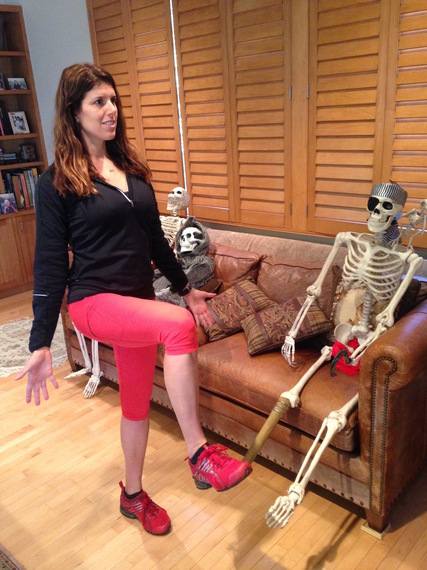
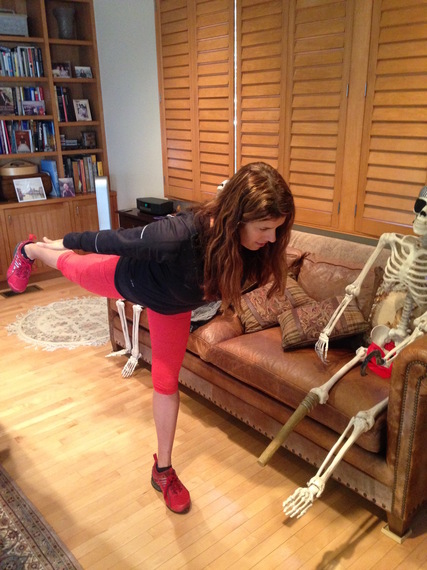
Stand tall and lift one leg up. Make sure your hips are neutral and you don't hitch the hip on the leg that is up. Contract your glute muscles on the standing leg, while utilizing the entire surface of that supportive foot. Keep your pelvis tucked slightly so that your hips are parallel to the ground and your lower back is neutral (not hyper-extended). Align your knee on the extended leg over the foot. Keep your chest upright and your shoulders back. Align your ears over your shoulders. Lift through the crown of your head to lengthen the spine. Once you are aligned, slowly transition the bent leg into hip extension and bring your leg back as you hinge your upper body forward at the hip joint. Square your extended hip to the ground and point your toes to face the ground. Reach through the finger tips towards the back wall. Lift up through the chest, while keeping your core engaged. Find your new center of gravity. Then transition back to a single leg balance. For video demonstration, click HERE.
Tree pose with Internal Rotation of Hip: 
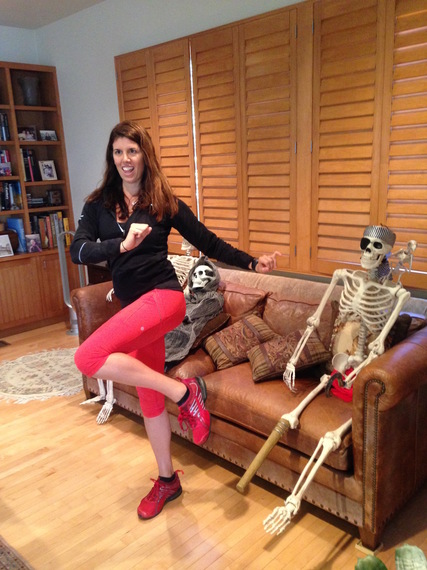
Starting in tree pose, contract your glute muscles on the standing leg, while utilizing the entire surface of that supportive foot. Keep your chest upright and your shoulders back. Align your ears over your shoulders. Be sure to get the foot into either the upper inside of your quadriceps or on your calf. Avoid balancing the foot on the knee. Once you stabilize in tree pose, slowly internally rotate the hip and hold. Watch that the standing leg doesn't buckle at the knee by contracting the standing glute and having a slight bend in the standing knee. Slowly go between tree and internal rotation. Use your arms to guide your balance between postures. For video demonstration, click HERE.
Figure 4: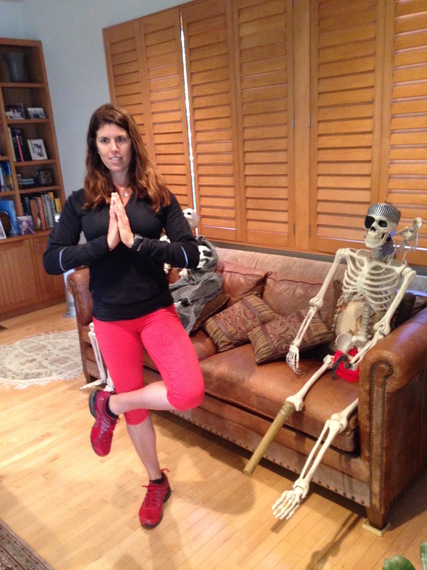

Start on one leg and rotate the opposite leg into a flexed position at the knee. Balance the leg over the quadriceps and align your body as mentioned in the previous exercises. Flex the foot (toes towards the shins) on the bent leg to help protect the knee. Descend through the standing leg as you rotate the bent knee towards the ground, bringing that hip into a deep external rotation. Keep your spine aligned and neutral. Sit your hips back to keep the standing knee tracking over the standing ankle. Keep your core engaged, as you lift through your chest. Slowly come back up and slowly sit back down. For video demonstration, click HERE.
Hand to Foot Pose with Hip Abduction:
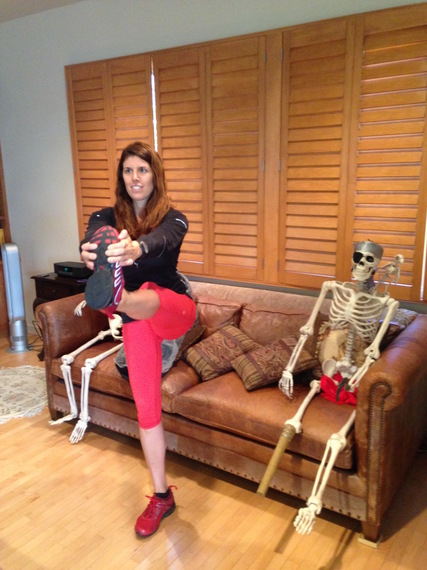
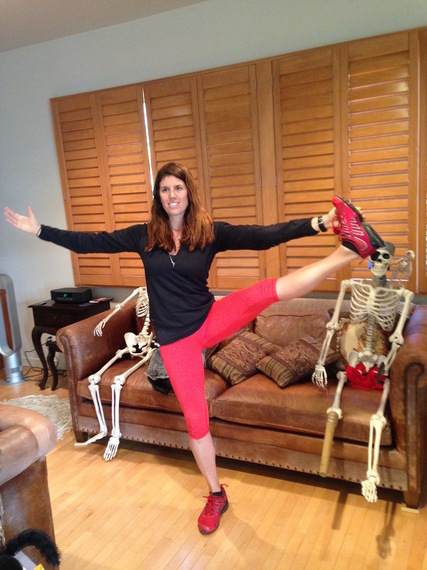
This is an advanced exercise. Therefore, you can always start with a static hold by bringing your leg up and focusing on re-centering your gravity pull over the standing leg. Stand tall. Contract your glute muscles on the standing leg, while utilizing the entire surface of that supportive foot. Keep your pelvis tucked slightly so that your hips are parallel to the ground and your lower back is neutral (not hyper-extended). Keep your pelvis tucked slightly so that your hips are parallel to the ground and your lower back is neutral (not hyper-extended). Keep your chest upright and your shoulders back. Align your ears over your shoulders. Once you have a neutral body positioning, then and only then should you hinge through your hips to grab the extended foot. Keep your hips squared when you do this. It is easy to externally rotate the hip to connect to the foot. Therefore, grab on the outside of the foot and the inside of the foot. Once you extend the leg forward, take a moment to stabilize through the standing leg and then abduct the leg out to the side using your same hand to hold the foot. Square the hips forward. Notice the change in your center of gravity. Keep your core engaged and your upper body aligned as noted above. Take your time making these transitions from hip flexion to hip abduction. Be mindful not to torque the knee on the standing leg. Slightly bend the knee if need be to avoid any undue pressure in that knee. For video demonstration, click HERE.
Photos and Video: Mr Smith